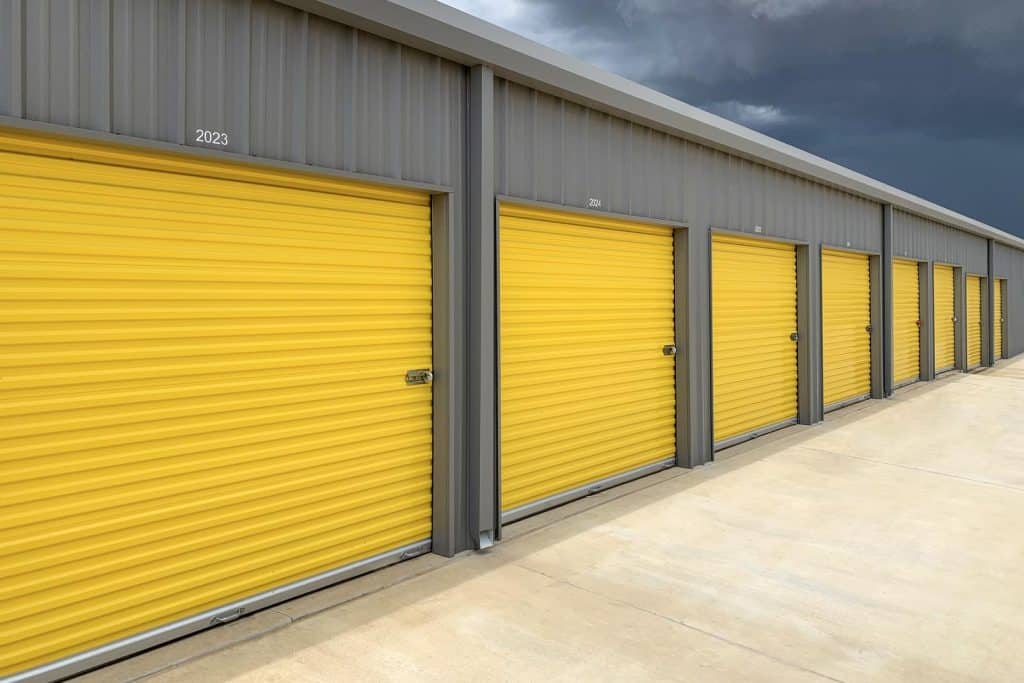When it comes to storing your belongings, size does matter. Whether you’re decluttering, moving, or simply need extra space, choosing the right storage unit size is crucial. But how do storage unit sizes vary, and what dimensions should you look for? In this comprehensive guide, we’ll walk you through everything you need to know to make an informed decision. If you’re looking for Storage Kelowna, check out our website for the best storage solutions in Kelowna.
Understanding the Basics of Storage Unit Sizes
When it comes to storage units, one size certainly does not fit all. The variety of sizes available is designed to meet a range of needs, from storing a few boxes of seasonal items to housing an entire household’s worth of furniture. Understanding the basics of storage unit sizes can help you make an informed decision that not only meets your storage needs but also optimizes your budget. In this section, we’ll delve into the standard sizes available and how to estimate the size you’ll need for your specific situation.
Standard Sizes and Their Uses
Storage units typically come in several standard sizes, each designed for specific uses:
- 5×5 Units: These are ideal for storing small items like boxes, small furniture, or seasonal decorations. Think of it as a walk-in closet.
- 5×10 Units: Suitable for a one-bedroom apartment without large appliances. It’s perfect for storing things like mattresses, boxes, and chairs.
- 10×10 Units: This size can generally hold the contents of a one-bedroom apartment with some appliances. It’s a popular choice for people between moves.
- 10×15 Units: Suitable for a two-bedroom apartment or even a small house. It can hold appliances, multiple pieces of furniture, and several boxes.
- 10×20 Units: This is more like a small garage and can hold a vehicle or the contents of a three-bedroom house.
- 10×30 Units and Larger: Ideal for commercial storage or storing large vehicles like RVs and boats.
Understanding the standard sizes and their typical uses can help you narrow down your options and avoid paying for space you don’t need.
How to Estimate the Size You Need
Estimating the size of the storage unit you’ll need involves a bit of planning. Start by taking an inventory of all the items you plan to store. Measure larger pieces of furniture and estimate the number of boxes you’ll have. Some storage facilities offer online calculators that can help you get a rough idea of the size you’ll need.
Another effective strategy is to actually pack your items and stack them together in a way that maximizes space. This will give you a visual idea of how much room you’ll need. If in doubt, consult with storage facility staff; they have the expertise to recommend a unit size based on your inventory.
By understanding the standard sizes and how to estimate your needs, you’re well on your way to making a smart storage decision. Whether you’re storing personal items or business inventory, the right unit size can make all the difference.
The Importance of Dimensions in Storage Units
When selecting a storage unit, the dimensions—height, width, and depth—are often overlooked, yet they play a critical role in how much you can store and how easily you can access your items. While the square footage gives you a general idea of the unit’s size, the dimensions can significantly impact the unit’s usability. In this section, we’ll explore why each dimension matters and introduce you to specialized storage units with unique dimensions that might better suit your needs.
Height vs. Width vs. Depth
- Height: The height of a storage unit is crucial if you plan to stack items or store tall pieces of furniture. A unit with a higher ceiling allows you to utilize vertical space, which can be especially beneficial in smaller units. However, make sure you can safely reach items that are stored high up.
- Width: The width of the unit can affect how many items you can store side by side. A wider unit may allow for easier access to your belongings without having to move other items out of the way. This is particularly useful for business inventory or if you’ll be frequently accessing the unit.
- Depth: The depth of the unit is often the least considered dimension but can be just as important. A deeper unit can accommodate longer items like canoes, ladders, or pieces of lumber. It can also affect how you organize the unit; for example, deeper units may allow you to create walkways for easier access to items at the back.
Specialized Storage Units with Unique Dimensions
While standard storage units meet most needs, there are specialized units designed for specific purposes:
- Narrow Units: These are ideal for storing long, slender items like skis, surfboards, or even rolled-up rugs.
- Extra Tall Units: Perfect for storing tall pieces of furniture or stacking many boxes. These units are also beneficial for business inventory that needs to be accessed frequently.
- Wide-Door Units: These units have wider-than-average doors to accommodate large items like pianos or bulky furniture.
- Custom Units: Some facilities offer custom dimensions to meet unique storage needs. Whether you’re storing a small boat, a collection of art, or oversized industrial equipment, there’s likely a specialized unit for you.
Climate-Controlled Units: Do Size and Dimensions Matter?
Climate-controlled storage units offer a level of protection that standard units can’t match. These units maintain a consistent temperature and humidity level, making them ideal for storing sensitive items like electronics, antiques, and important documents. But when it comes to climate-controlled units, do size and dimensions really matter? The answer is a resounding yes. In this section, we’ll explore the benefits of climate-controlled units and delve into the size considerations you should keep in mind when choosing one.
Benefits of Climate-Controlled Units
Climate-controlled units offer several advantages over standard units:
- Temperature Stability: These units maintain a consistent temperature, which is crucial for items that are sensitive to temperature fluctuations, such as electronics, musical instruments, and certain types of furniture.
- Humidity Control: Maintaining a consistent humidity level helps prevent the growth of mold and mildew, which is particularly important for storing items like clothing, documents, and upholstered furniture.
- Dust and Pest Control: Climate-controlled units are generally better sealed than standard units, offering added protection against dust and pests.
- Odor Prevention: The controlled environment helps prevent unpleasant odors, which is beneficial if you’re storing items like clothing or upholstery.
- Long-Term Storage: For items that will be stored for an extended period, climate control can help preserve their condition over time.
Understanding these benefits can help you decide whether a climate-controlled unit is the right choice for your storage needs.
Size Considerations for Climate-Controlled Storage
When it comes to climate-controlled units, size and dimensions can impact both cost and effectiveness:
- Cost: Climate-controlled units are generally more expensive than standard units. The larger the unit, the higher the cost will be. Therefore, it’s essential to accurately estimate the size you need to avoid paying for unnecessary space.
- Efficiency: Larger climate-controlled units may require more energy to maintain the desired temperature and humidity levels. Make sure the unit is well-insulated to ensure efficient operation.
- Organization: Just like with standard units, the dimensions of a climate-controlled unit will affect how you can organize your items. Consider the height, width, and depth to ensure you can easily access your belongings and that they are stored in a way that maximizes the unit’s climate control features.
- Specialized Needs: Some items may require specific climate conditions. In such cases, you may need a specialized climate-controlled unit that can meet those specific needs, which may not be available in all sizes.
Vehicle Storage: What Sizes and Dimensions to Consider
Storing a vehicle is a different ball game compared to storing household items. The size and dimensions of the storage unit become even more critical when you’re looking to store something as valuable and sizable as a vehicle. Whether you have a car, motorcycle, RV, or boat, the right storage unit can help protect your investment from the elements and provide the security you need. In this section, we’ll discuss the sizes and dimensions you should consider for different types of vehicle storage.
Storage for Cars and Motorcycles
When it comes to cars and motorcycles, the width and depth of the unit are the most crucial dimensions. For most cars, a standard 10×20 unit will suffice, but if you have a larger vehicle like an SUV or a truck, you may need a 10×30 unit. Motorcycles usually fit comfortably in a 5×10 unit. Always measure your vehicle and compare it to the unit’s dimensions to ensure a good fit. Also, consider the unit’s door width to make sure you can easily drive your vehicle in and out.
Storage for RVs and Boats
RVs and boats require specialized storage units due to their size and features. For most RVs, you’ll need a unit that is at least 10×40, but sizes can go up to 12×50 or larger for oversized models. Boats also require large units, often similar in size to RV storage units. Depth is particularly important here, as you’ll need to accommodate not just the length of the boat but also any trailers or additional equipment. Always check the unit’s height to ensure it can accommodate taller RVs or boats with masts or superstructures.
Tips for Maximizing Space in Your Storage Unit
Making the most of your storage unit involves more than just selecting the right size; it’s also about how you use the space. Efficient packing and organization can help you get the most bang for your buck. In this section, we’ll share some tips on maximizing space through efficient packing strategies and utilizing vertical space.
Efficient Packing Strategies
Packing efficiently can free up a surprising amount of space. Use boxes of the same size for easier stacking, and fill each box to capacity to prevent it from collapsing. Place heavier items at the bottom and lighter ones on top to maintain stability. Label each box clearly to make retrieval easier.
Utilizing Vertical Space
Don’t forget to use the vertical space in your unit. Stack boxes and use shelving units to take advantage of the unit’s height. For taller units, consider using a step ladder to safely reach items stored higher up. Just make sure that the stacks are stable to prevent any accidents.
Final Words
Choosing the right storage unit size and dimensions can make a significant difference in your storage experience. Whether you’re storing household items, vehicles, or specialized goods, understanding your options is key. Ready to find the perfect storage unit? Visit our website to explore the best storage solutions in Kelowna and beyond.

